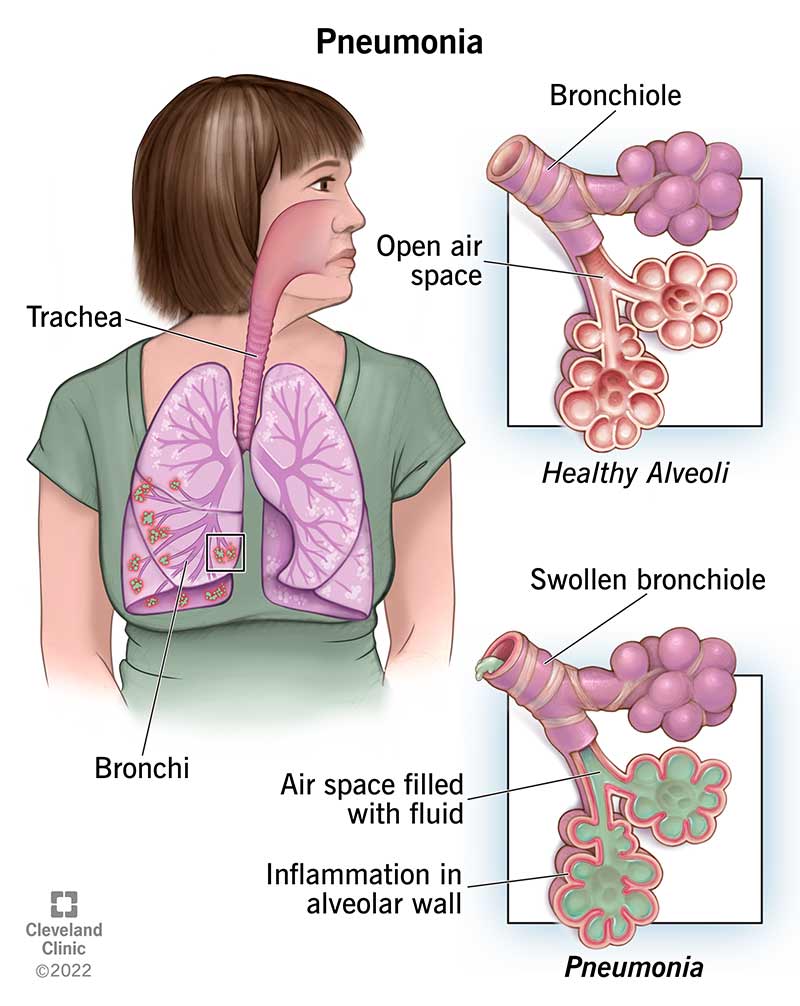The nurse has applied a client problem of ineffective gas exchange for a client diagnosed with chronic bronchitis. Which intervention would the nurse include in the plan of care?
Administer oxygen per prescriber’s order to keep SpO2 greater than 96%.
Place patient in Sims position to assist with airway clearance.
Assess client use of a peak expiratory flow rate meter.
Assist with coughing and deep breathing at least every 2 hours while awake.
The Correct Answer is D
Choice A reason:
Administering oxygen per the prescriber’s order to keep SpO2 greater than 96% is not typically recommended for clients with chronic bronchitis. High levels of oxygen can suppress the respiratory drive in clients with chronic obstructive pulmonary disease (COPD), which includes chronic bronchitis. The target SpO2 for these clients is usually between 88% and 92%.
Choice B reason:
Placing the patient in the Sims position is not the most effective position for airway clearance. The Fowler’s or semi-Fowler’s position is generally preferred as it promotes better lung expansion and facilitates easier breathing.
Choice C reason:
Assessing the client’s use of a peak expiratory flow rate meter is important for monitoring the severity of bronchospasm and airflow obstruction. However, it is not a direct intervention for improving gas exchange.
Choice D reason:
Assisting with coughing and deep breathing at least every 2 hours while awake is an effective intervention for clients with chronic bronchitis. This helps to mobilize secretions, improve ventilation, and enhance gas exchange. Regular coughing and deep breathing exercises can prevent atelectasis and reduce the risk of respiratory infections.
Nursing Test Bank
Naxlex Comprehensive Predictor Exams
Related Questions
Correct Answer is D
Explanation
Choice A reason:
Initiating droplet precautions is not sufficient for a client presenting with symptoms such as coughing up blood, productive cough, and night sweats. These symptoms are indicative of possible tuberculosis (TB), which is an airborne disease. Droplet precautions are used for infections spread through large respiratory droplets, such as influenza or pertussis, but not for TB.
Choice B reason:
Considering standard precautions to be sufficient is incorrect. Standard precautions are the basic level of infection control that should be used in the care of all patients to prevent the spread of infections. However, for a client with symptoms suggestive of TB, additional airborne precautions are necessary to prevent the spread of the disease.
Choice C reason:
Transferring the client to a positive pressure room is inappropriate. Positive pressure rooms are designed to keep contaminants out and are used for protecting immunocompromised patients from infections. For a client with suspected TB, a negative pressure room is required to prevent the spread of infectious particles to other areas.
Choice D reason:
Initiating airborne precautions is the correct intervention. Airborne precautions are necessary for diseases that are transmitted through smaller respiratory droplets that can remain suspended in the air and be inhaled by others. Tuberculosis is one such disease, and initiating airborne precautions helps to prevent the spread of the infection to healthcare workers and other patients.
Correct Answer is C
Explanation
Choice A reason:
Notifying the physician immediately is not the first action to take. While it is important to keep the physician informed, the nurse should first implement measures to alleviate the client’s pain and discomfort.
Choice B reason:
Increasing the oxygen from 2 to 4 liters/minute may be necessary if the client is experiencing hypoxia, but it is not directly related to managing pleuritic chest pain. The primary focus should be on pain relief and comfort.
Choice C reason:
Teaching about splinting the chest when coughing is the most appropriate action. Splinting helps to reduce pain by stabilizing the chest wall during coughing, which can be particularly painful for clients with pleuritic chest pain.
Choice D reason:
Obtaining an electrocardiogram (ECG) is not immediately necessary for managing pleuritic chest pain caused by pneumonia. An ECG may be indicated if there are concerns about cardiac issues, but it is not the primary intervention for pleuritic pain.

Whether you are a student looking to ace your exams or a practicing nurse seeking to enhance your expertise , our nursing education contents will empower you with the confidence and competence to make a difference in the lives of patients and become a respected leader in the healthcare field.
Visit Naxlex, invest in your future and unlock endless possibilities with our unparalleled nursing education contents today
Report Wrong Answer on the Current Question
Do you disagree with the answer? If yes, what is your expected answer? Explain.
Kindly be descriptive with the issue you are facing.
